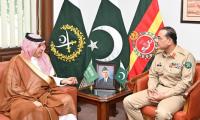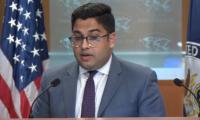The dramatic developments in Afghanistan can possibly land Pakistan in a repeat of the post-Soviet withdrawal scenario. The US and the West can either deprioritise the region – and Pakistan – or apply pressure a la the Financial Action and Task Force (FATF) to facilitate its agenda in Afghanistan.
In either case, Pakistan’s Achilles heel is its economy’s abject dependence on foreign debt, arising out of the import-intensity of production sectors as well as consumption. The Covid-19 pandemic had already exposed the structural weaknesses of the economy – which the present Afghanistan situation has compounded.
The defining characteristic of the country’s economy is its narrow base, across the board as well as sector-wise. Crop agriculture is dominated by one food crop, wheat, and three cash crops, rice, cotton and sugarcane. The two cash crops – rice and cotton – cater to exports, and sugarcane is more profitable as import substitution. The manufacturing and export sectors are dominated by textiles. Revenue is dominated by the general sales tax (GST), accrued largely from the textile-dominated manufacturing sector. Imports are dominated by petroleum, oils and lubricants (POL).
It was assumed that the economic activity generated by the prevailing model would generate jobs, raise incomes and reduce poverty. That, however, has not happened for over seven decades now. The economy has performed well only in spurts, with each spurt lasting not more than one or two years. The export base, too, has remained in a narrow band, comprising three or four commodities, and one item – textiles – accounting for two-thirds of exports. The market for exports has also remained confined largely to three or four countries or group of countries like the EU. That the economy has repeatedly been on the verge of default and is increasingly dependent on bailouts is a telling comment on the growth model being followed. Covid-19 has glaringly exposed its inability to sustain the economy at large.
The economy has served the interests of particular sections of society and state. Inequality has increased, with the rich becoming richer and the poor getting poorer. Luxury housing schemes have proliferated, and quality education and healthcare has become the preserve of the rich. A new class of middle-class poverty has emerged, and hunger among the poor has now begun to surface in household surveys. The plight of the urban poor is visibly evident from commuters packed in, and hanging on to the roofs of, rickety public transport vehicles. While inter-personal inequality is generating social pressures, regional inequality is contributing to political tensions. The fact is that the economy is not geared to serve the needs of the people, and Covid-19 has beamed the searchlight on what economic development has not delivered for the people.
The economic management model has been driven over the last four decades by two parameters: globalisation and market-orientation. It has been assumed that open trade will benefit consumers in terms of price and quality and exports will pay for imports: a globalisation postulate. An example of this is the sweat-soaked trail from raw cotton (crop agriculture) to textiles (manufacturing) to exports and imports (balance of trade). Efficient management of this trail has been delegated to the market – the assumptions being that the market is well placed to determine what and how much will be produced, and what and where the produce will be sold. These assumptions haven’t delivered the promised results yet.
The pandemic-induced economic meltdown has upended the globalisation-market template. The ensuing worldwide recession has shrunk household incomes and consumer demand including for imported goods, in all countries. Since total world imports are equal to total world exports, lower demand for imports also means reduced market for exports. The global market for foreign investments is also likely to stagnate.
Pakistan’s major export comprises textiles, and the major markets for this product are North America and Europe. Recessionary conditions in the two regions are likely to see a decline in Pakistan’s already stagnant exports – and translate into a sharp decline in foreign exchange receipts. Downturns in Gulf countries are likely to see the return of expatriate labour to Pakistan – and the corresponding decline in remittances. However, imports are likely to remain at their present levels, given that they are inelastic. The net result is likely to be reflected in further deterioration of the balance of payments.
Resultantly, Pakistan is likely to face multi-sectoral chain-effect challenges. The decline in textile exports is likely to lead to the closure of textile mills, some permanently. Reduced aggregate output of textiles is likely to result in reduced demand for raw cotton, extending the impact of global recession to the agriculture sector. The combined impact of a slowdown in the manufacturing and agriculture sectors is likely to be mass unemployment and social unrest.
Pakistan is essentially a cotton economy. However, the golden age of the cotton economy is over. The reverse chain of textile exports, textile manufacturing and cotton cultivation appears to be broken and is unlikely to remain the mainstay of the economy. Consequently, the ‘globalisation’ model of generating growth is passe. The neoliberal market model has also cracked. The market supremacy philosophy gave the producers the freedom to decide on ‘what, how much and where’ to produce or import from. This is a luxury that is no longer tenable.
Pakistan will need to reengineer its economy to revolve around domestic supply (output) catering to domestic demand (consumption). The luxury of meeting consumer needs through imports is no longer available. Faced with the decline of foreign exchange inflows, Pakistan will have to produce what it essentially needs, irrespective of world price differentials. For essential and strategic commodities, considerations of comparative advantage will need to give way to ‘autarky’ or self-sufficiency models. The state will have to re-assert responsibility for directing the economy, provision of employment and social services, and meeting the basic needs of the people. That is the only rationale for the state to exist.
To be continued
The writer was a member of the 7th NFC and is now a member of the 10th NFC.
Twitter: @kaiserbengali
A woman walks past a building of the International Monetary Fund. — AFP/FileThe annual and spring meetings of the...
Late Benazir Bhutto's daughter Asifa Bhutto Zardari addresses the Christian community in Bihar Colony on January 23,...
Representational image. — PexelsWater is an important scarce natural resource that is required for several everyday...
Pakistani employees of online marketplace company Kaymu at work in Karachi. — AFP/FileThe true spirit of development...
India uses Afghanistan as a backstage area to carry out terrorist attacks against Pakistan
Another report by the Pakistan Institute of Peace Studies states that 78 per cent of attacks have been carried out by...







